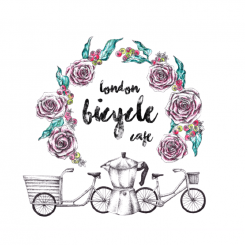The Unseen Commuters: Navigating Injustices in Urban Mobility
- Posted on
- By Andrew McClenaghan
- 0

The challenges that many of us face because of mobility poverty are not new, surprisingly, there is not much awareness about it yet. Fortunately, this is changing. Data and numbers are not enough to bring the attention this problem deserves. Worse than that, in some cases, people living with mobility poverty and their lived experiences are still invisible.
The following is a preface from the digital publication. View the full publication online here.
Join us at the Cafe on June 7th, 630pm to meet Luis Patricio, Co-author and advocate.
PREFACE
In the stories you will read in this book, the characters are fictional; the facts are very real. The fictional lives are a collage of real world occurrences. The challenges that many of us face because of mobility poverty are not new, surprisingly, there is not much awareness about it yet. Fortunately, this is changing. Data and numbers are not enough to bring the attention this problem deserves. Worse than that, in some cases, people living with mobility poverty and their lived experiences are still invisible.
Mobility poverty manifests both at an individual and systemic level, sustained by the unequal distribution of resources—be it financial, temporal, human, or intellectual—favoring those already privileged in various aspects of life.
This entails being deprived of job prospects, lacking access to fresh or any food, and possibly even being confined to one's home, thus remaining invisible in conventional traffic assessments that influence urban mobility infrastructure projects. It involves opting for environmentally friendly choices like reducing car usage, only to sacrifice convenience and freedom when it comes to accessing local amenities within the city.
Individuals experiencing mobility poverty are stripped of fundamental human rights including the right to safety, freedom of movement and the right to live. Building a city that caters to everyone requires recognizing the daily hurdles confronted by many of our most vulnerable members.
Traditionally, we address our social problems in a compartmentalized and disconnected way. The data collection to develop the stories present in this book used an SDG2 lens to approach urban mobility as a window to many other issues such as food security, housing, 3 climate change adaptation, decent work, anti-oppression, belonging and many other intersecting challenges that we are facing today.
Our hope is that these stories and the illustrations that you will see in this book here will put a face to the numbers of traffic data, that it will make those hardships a little more visible, and will ensure that the ones that need our help the most won’t be forgotten.
The people portrayed in the stories are all subjected to the universal human condition in search of happiness, purpose and love. People who care for their children, people who want to enjoy life, people who want to leave a positive mark after they are gone. We all have a little bit of Victoria, Jerry, Aria, Rose, and Jess and all the others in this book. We are all a collage of facts in the same reality; we are only rearranged in a different way and order due to the unique life circumstances each of us has.
This book is rooted in the Sustainable Development Goals (SDGs) and the arts. The SDGs serve as a common language, intertwining environmental, social, and economic dimensions to illustrate the interconnectedness of our problems and solutions.
Art, being a universal language, has the power to resonate with us all. Moreover, it plays a vital role in fostering a functioning democracy and promoting a healthy society, as emphasized by Max Wyman, a leading cultural commentator and writer, throughout his decades-long career.
From this shared understanding and connection through the SDGs and the arts, we can finally care enough to take effective action.

Comments
Be the first to comment...